The On/Off Button

Turns the device ON/OFF.
Can be used as a restore button. Long press to reset the device.
Parameters:
Wireless Type: Zigbee 3.0
Humidity: <80%
Material: ABS+PC
Rated Voltage: AC 100-240V
Rated Current: 10A
Working Temp: -20°C~ +50°C
Using The Zemismart Hub
Step 1: Install the "Smart Life" or "Tuya Smart" App
1. You can find the "Smart Life" or "Tuya Smart" Apps on the Apple App store, Google Play or you can scan the QR codes below and install it.

2. Connect The Zemismart Hub to the Tuya app by following the instuctions provided with the Zemimsart Hub.
Connecting your device with Zemismart Zigbee Hub.
A. Easy Mode (Recommended)
1. Please make sure the device is plugged into a power point and turned on, then open the "Smart Life" or "Tuya Smart", tap on the Zemismart Hub icon the "ADD SUB DEVICES"
2. Long Press on/off button of the device for 5 seconds, until indicator light quickly flashes.
3. Make sure the indicator light are flashing rapidly and confirm it in the app.
4. Wait for configuring successfully, then tap "Done".
Getting to know "Smart Life" or "Tuya Smart" App
A. Devices
You can add listed devices by tapping the "+" at the top right corner of the App
1. Switches
Switches allow you to turn on/off you device from anywhere. As long as you have an internet connection you can control the device in your home.
By tapping the icon at the upper right corner of the App you are able to modify the device name or even create a group (if you have multiple devices), which means you can turn multiple devices on and off at the same time.
2. Timer
You can set the devices on or off after the specific time you want with this function.
3. Countdown
With the countdown timer feature, you can automatically switch on and off the running household appliances.
4. Statistics
You can check the real-time and historic power consumption here if your device is built with the energy monitoring function.
B. Scenes
With this function you can get the device(s) to adjust to a specific set of configurations you create.
Safety Information
The device is recommended for indoor use and in a dry location only. The power outlet is to be used within the outlet rating refered in this manual.
Connecting a Zigbee Device to ZHA (Zigbee Home Automation)
ZHA is a Home Assistant integration that allows you to control Zigbee devices using a Zigbee controller.
Requirements:
- Home Assistant
- A Zigbee USB stick (e.g., ConBee II, CC2531, or others)
Steps:
-
Install Home Assistant: Ensure you have Home Assistant running. This can be on a Raspberry Pi, a virtual machine, or another supported hardware platform.
-
Plug in the Zigbee USB Stick: Connect your Zigbee USB stick to the device running Home Assistant.
-
Install the ZHA Integration:
- Go to Home Assistant's web interface.
- Navigate to
Configuration>Integrations. - Click on the
+ Add Integrationbutton. - Search for
Zigbee Home Automationand select it. - Home Assistant should automatically detect the USB stick. If not, you may need to manually enter the path to the USB device (e.g.,
/dev/ttyUSB0).
-
Configure the USB Stick: Follow the prompts to configure your Zigbee stick.
-
Add Zigbee Devices:
- Once the ZHA integration is set up, you can start adding devices.
- Go to
Configuration>Integrations. - Find the
Zigbee Home Automationintegration and click onConfigure. - Click on
Add Device. - Put your Zigbee device in pairing mode (this process varies by device, often involving pressing a button or holding a reset button).
- The device should appear in the list and be added to your Home Assistant setup.
Connecting a Zigbee Device to Zigbee2MQTT (Z2M)
Zigbee2MQTT allows you to control Zigbee devices via MQTT (Message Queuing Telemetry Transport).
Requirements:
- Home Assistant (optional but recommended)
- A Zigbee USB stick (e.g., CC2531, ConBee II, or others)
- MQTT broker (e.g., Mosquitto)
Steps:
-
Install Home Assistant (if you haven't already): Same as above.
-
Set Up MQTT Broker:
- You can use an MQTT broker like Mosquitto.
- Install the Mosquitto add-on from Home Assistant's Supervisor > Add-on Store.
- Start the Mosquitto add-on and configure the necessary MQTT settings.
-
Install Zigbee2MQTT:
- Install the Zigbee2MQTT add-on from the Home Assistant Add-on Store, or you can install it manually following the instructions from the Zigbee2MQTT documentation.
- Configure the Zigbee2MQTT add-on, specifying the path to your USB stick (e.g.,
/dev/ttyUSB0) and MQTT broker details.
-
Start Zigbee2MQTT:
- Start the Zigbee2MQTT add-on.
- Access the Zigbee2MQTT web interface (usually available at
http://your-home-assistant-ip:8080).
-
Add Zigbee Devices:
- In the Zigbee2MQTT web interface, click on
Permit Join. - Put your Zigbee device in pairing mode (this process varies by device, often involving pressing a button or holding a reset button).
- The device should appear in the Zigbee2MQTT web interface and be added to your MQTT setup.
- In the Zigbee2MQTT web interface, click on
-
Integrate Zigbee2MQTT with Home Assistant:
- In Home Assistant, navigate to
Configuration>Integrations. - Add the MQTT integration if it is not already set up.
- Configure it to connect to your MQTT broker.
- Zigbee devices connected via Zigbee2MQTT should automatically appear in Home Assistant if they are properly configured in Zigbee2MQTT.
- In Home Assistant, navigate to
Tips:
- Pairing Mode: Ensure your Zigbee device is in pairing mode when attempting to add it.
- Device Compatibility: Check that your Zigbee devices are compatible with your chosen Zigbee USB stick and integration.
- Logs: If you encounter issues, check the logs in Home Assistant and Zigbee2MQTT for troubleshooting information.
- Community Support: Both Home Assistant and Zigbee2MQTT have active communities that can be a valuable resource if you run into problems.
By following these steps, you should be able to successfully connect your Zigbee devices to either ZHA or Zigbee2MQTT, allowing you to control them via Home Assistant.

